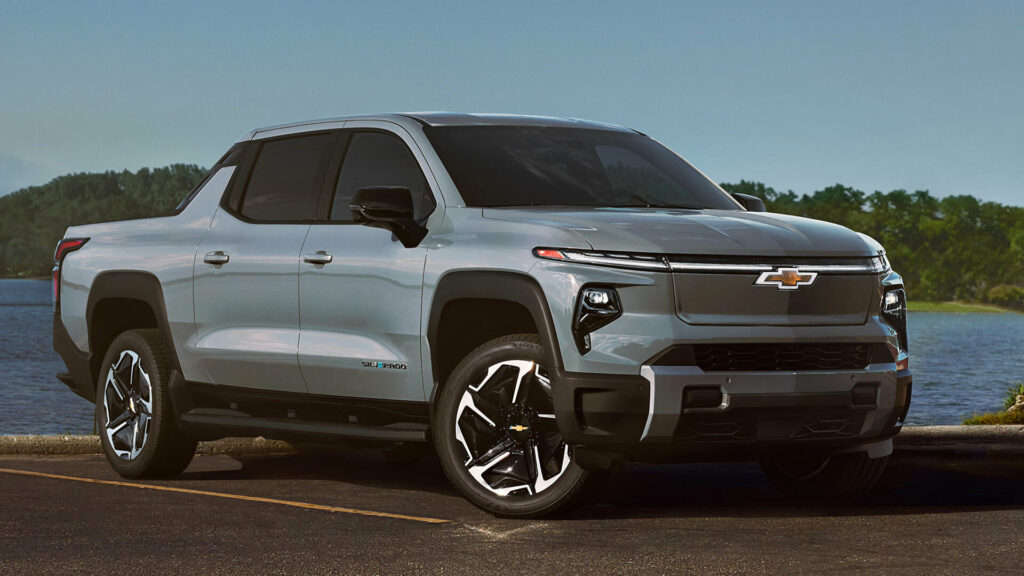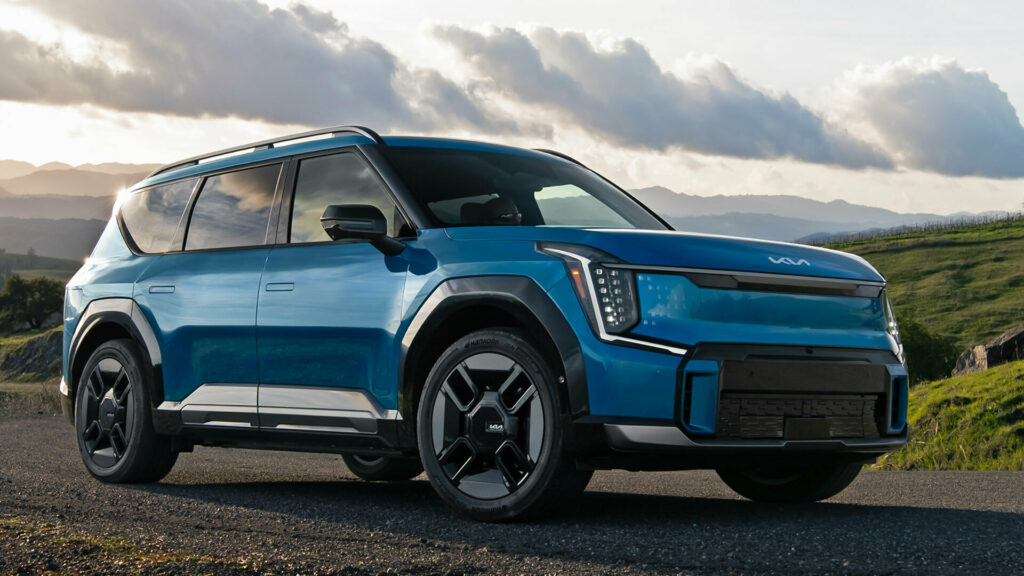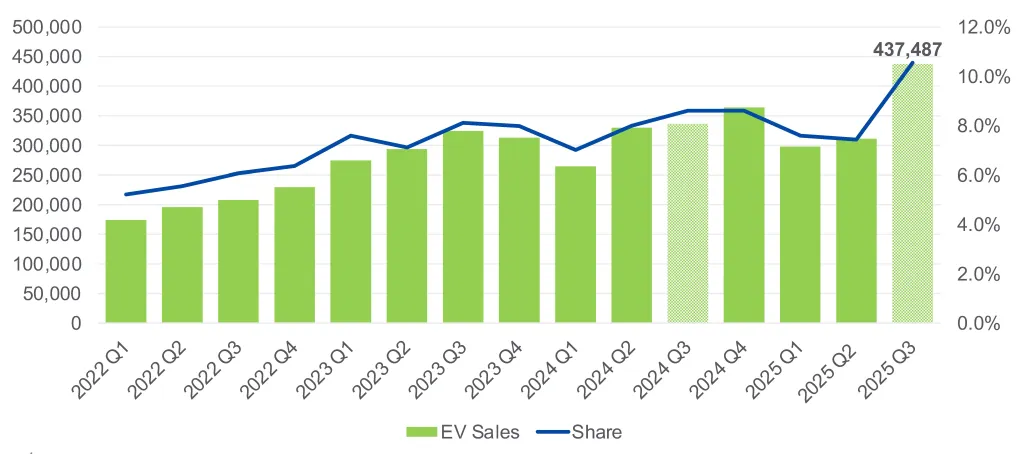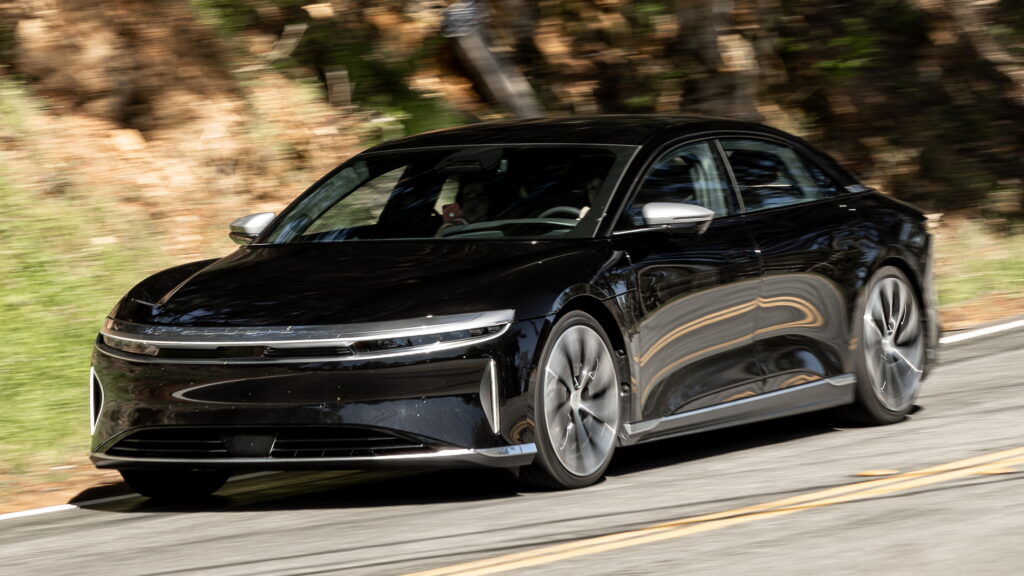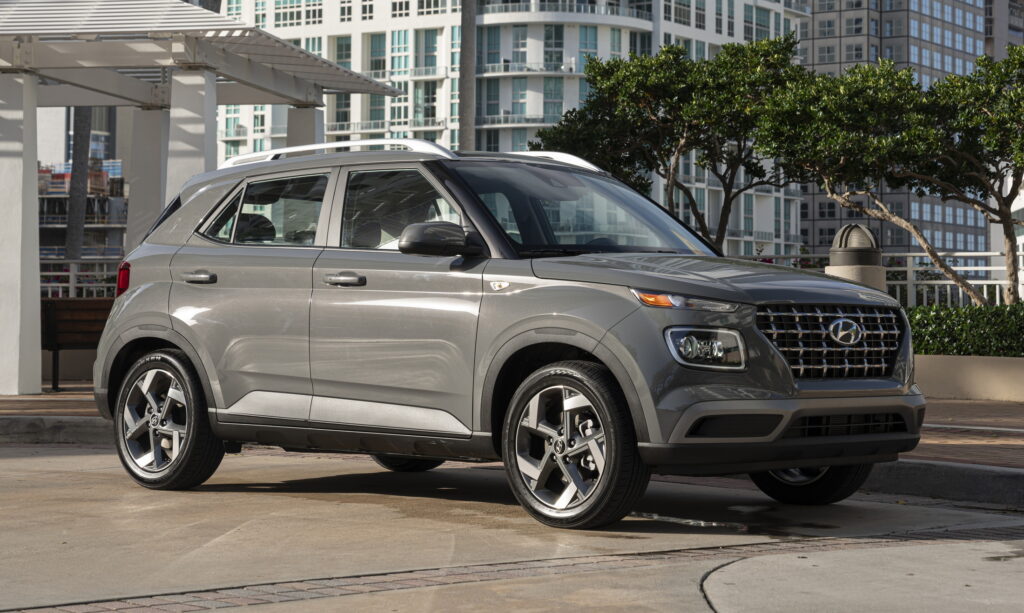BYD Sold Nearly Three Times As Many Cars As Tesla In Europe

- Chinese automakers now hold 6.8% of total European new car sales.
- BYD’s European sales jumped 206.8% in October compared to 2024.
- Tesla’s sales plunged 48.5% in October to just 6,964 vehicles.
Chinese carmakers continue to accelerate their presence across Europe, steadily carving out a larger slice of the market. Once regarded as niche entrants, they now account for a 6.8 percent share of total European sales in October, with powerhouses like SAIC and BYD leading the charge while Tesla’s momentum falters.
Chinese Brands Gain Ground
In that month alone, around 75,000 vehicles from Chinese brands were sold across the European Union, the UK, and EFTA nations, which include Iceland, Liechtenstein, Norway, and Switzerland.
SAIC enjoyed a particularly strong month, with sales soaring from 17,552 in October last year to 23,860 this October. Across the January-October period, its sales have also risen 26.6 percent from 197,686 to 250,250 units.
Read: BYD’s European Expansion Is About to Explode
BYD is also enjoying a surge in demand and has almost triple Tesla’s sales. In October, the company sold a total of 17,470 vehicles across the region, a 206.8 percent rise from 5,695 last October. Year-to-date, its sales have increased by a monumental 285 percent, from 35,949 to 138,390 units.
Tesla’s Bloodbath

Things are not looking so pretty for Tesla. In October, its European sales slipped 48.5 percent from 13,519 units in the same month last year to just 6,964 in 2025. That means it fell even behind Porsche, which itself recorded a 26 percent sales decline but still usurped Tesla with 7,653 sales. Through the first ten months of the year, the American brand’s local sales have fallen 29.6 percent to 180,688.
Of the new cars sold by Chinese brands across the region in October, 36 percent were battery-electric vehicles. Of these, the small BYD Dolphin was the best-seller.
EU + EFTA + UK New Car Sales

Europe Sales Rise
Across Europe, new car registrations have edged up 1.4 percent, with battery-electric vehicles now holding a 16.4 percent share.
In the first ten months of 2025, 1,473,447 new battery-electric cars were registered across the EU. This growth owes much to the four largest markets, including Germany (+39.4%), Belgium (+10.6%), the Netherlands (+6.6%), and France (+5.3%), which together make up 62 percent of the total. In October alone, year-on-year battery-electric registrations rose by 38.6 percent.
Hybrid-electric cars continue to dominate as the most popular powertrain, holding a 34.6 percent share of the market. Between January and October 2025, registrations reached 3,109,362 units, led by Spain (+27.1%), France (+26.3%), Germany (+10.3%), and Italy (+8.9%).

Plug-in hybrids are also on the upswing, totaling 819,201 registrations, a 43.2 percent increase over last year. Demand has been especially strong in Spain (+109.6%), Italy (+76.5%), and Germany (+63.4%). Plug-in hybrids now represent 9.1 percent of all EU registrations, up from 7 percent a year ago.
Petrol-powered cars still hold 27.4 percent of the market, though their share has dropped from 34 percent last year as combustion sales continue to contract. Through October, petrol registrations fell 18.3 percent across major markets, with France down 32.3 percent, Germany 22.5 percent, Italy 16.9 percent, and Spain 13.7 percent.
Diesel continues its downward trend too, shrinking by 24.5 percent to a 9.2 percent market share.








